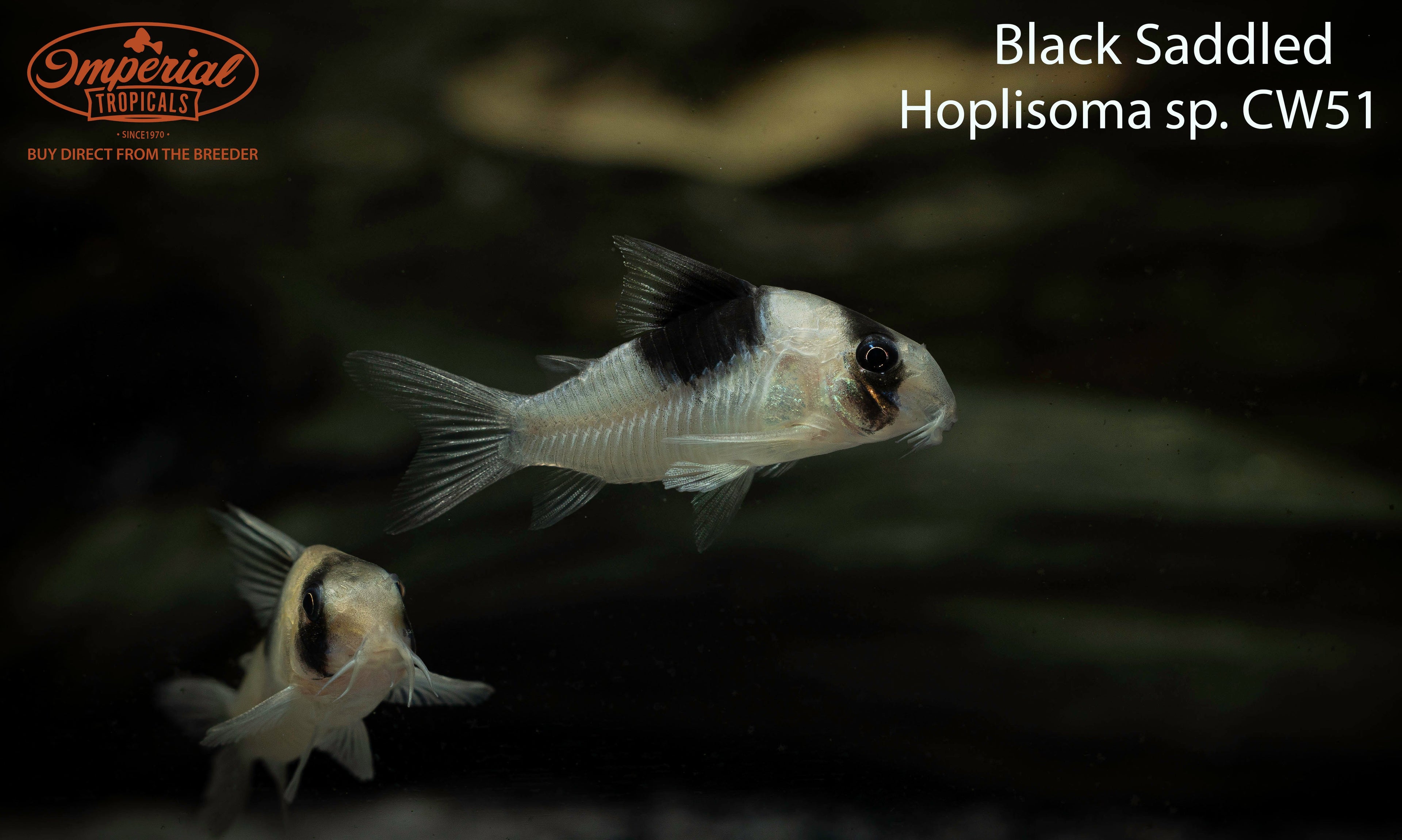
Remarks: The black saddled Hoplisoma, also known as the new panda Hoplisoma, is a medium-sized Corydoradinae that is found in a small creek near the settlement of Villa Bittencourt which lies on the border between Colombia, Brazil and Peru. A very similar, close relative known as the black diamond Hoplisoma can also be found here with both species sometimes being found intermingling among the fallen branches in the tannin-stained water. Both have white or tan bodies with a black mask over the eyes with the main difference between the two being the shape of the large black spot that runs from their lateral line above the pectoral fin into the dorsal fin. The black diamond Hoplisoma has a diamond shaped spot, while the black saddled Hoplisoma has a more rounded, almost semi-circle shape.
Black saddled Hoplisomas were previously classified as Corydoras sp. CW051, but were reclassified as Hoplisoma sp. CW051 upon publication of a phylogenomic analysis in 2024 that reclassified many species in the Corydoradinae subfamily.
Corydoradinae are small, peaceful catfish that are active shoalers and will stay near conspecifics, making for a lovely sight. They feed by searching through sand with their barbels, making such a substrate necessary for their long-term health. Gravel substrates tend to be abrasive and damage the barbels, leading to infections and an inability to find food.
While these friendly catfish are willing to swim with other species of Corydoradinae different from their own, this does not provide the same social need as being kept with members of their own species. Because of this, it is highly recommended to keep at least six of each species of Corydoradinae present in the aquarium and only mix species if one has the space to keep at least six of each.
Corydoradinae are often looked at as "scavengers," but they should be treated in a similar fashion as the rest of your fish. They are omnivores and require a mixed diet. Sinking prepared foods are readily accepted, as are frozen and live foods such as brine shrimp, blackworms, and bloodworms.
